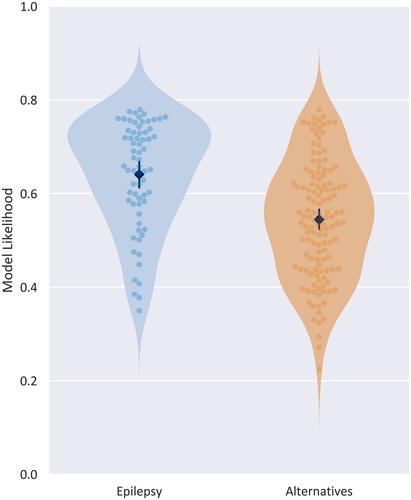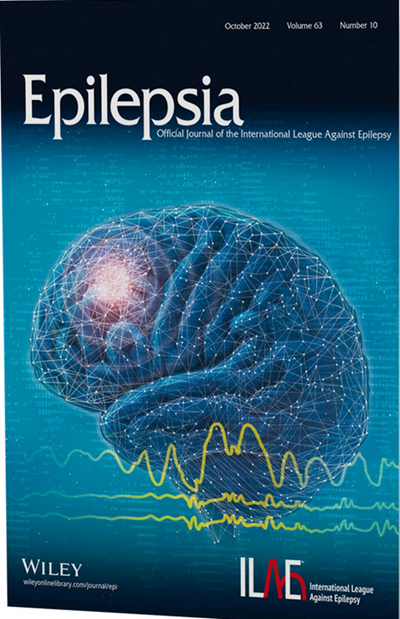Estimating the likelihood of epilepsy from clinically noncontributory electroencephalograms using computational analysis: A retrospective, multisite case–control study
Abstract
Objective
This study was undertaken to validate a set of candidate biomarkers of seizure susceptibility in a retrospective, multisite case–control study, and to determine the robustness of these biomarkers derived from routinely collected electroencephalography (EEG) within a large cohort (both epilepsy and common alternative conditions such as nonepileptic attack disorder).
Methods
The database consisted of 814 EEG recordings from 648 subjects, collected from eight National Health Service sites across the UK. Clinically noncontributory EEG recordings were identified by an experienced clinical scientist (N = 281; 152 alternative conditions, 129 epilepsy). Eight computational markers (spectral [n = 2], network-based [n = 4], and model-based [n = 2]) were calculated within each recording. Ensemble-based classifiers were developed using a two-tier cross-validation approach. We used standard regression methods to assess whether potential confounding variables (e.g., age, gender, treatment status, comorbidity) impacted model performance.
Results
We found levels of balanced accuracy of 68% across the cohort with clinically noncontributory normal EEGs (sensitivity =61%, specificity =75%, positive predictive value =55%, negative predictive value =79%, diagnostic odds ratio =4.64, area under receiver operated characteristics curve =.72). Group level analysis found no evidence suggesting any of the potential confounding variables significantly impacted the overall performance.
Significance
These results provide evidence that the set of biomarkers could provide additional value to clinical decision-making, providing the foundation for a decision support tool that could reduce diagnostic delay and misdiagnosis rates. Future work should therefore assess the change in diagnostic yield and time to diagnosis when utilizing these biomarkers in carefully designed prospective studies.


 求助内容:
求助内容: 应助结果提醒方式:
应助结果提醒方式:


